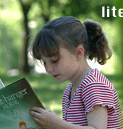Read the text with the purpose of re-telling it. As you read, reflect
on what you do.
There are two types of being; the eternal and
the transient. The eternal need to
return is not exemplified within the collective
drama of history, nor can it be
nurture through organization. Produce as it will,
the eternal is not oriented
towards produce. The transient, by its very nature,
will end; they want to die, not
live eternally. The struggles and education of
man in social history had meaning
for Marx such that the goal of a body politic
free from class conflict so that man
might develop as man.
Think of some key things you needed to do to read the text.
Read the text with the purpose of understanding the meaning of the four unknown words.
As you read, reflect on what you do.
The message had the quality of prosy. As much as we tried, we could not dilute its
mind-dulling, tiresome and mediocre quality. We had no difficulty deciding its source, the
brain behind the prosopopoeia. But why the need for a verbose emissary? Why the
non-appearance? As the emanation continued, we saw both the diatribe and the day
protend. Oh but to locate the promptuary for such rhetorical drivel.

